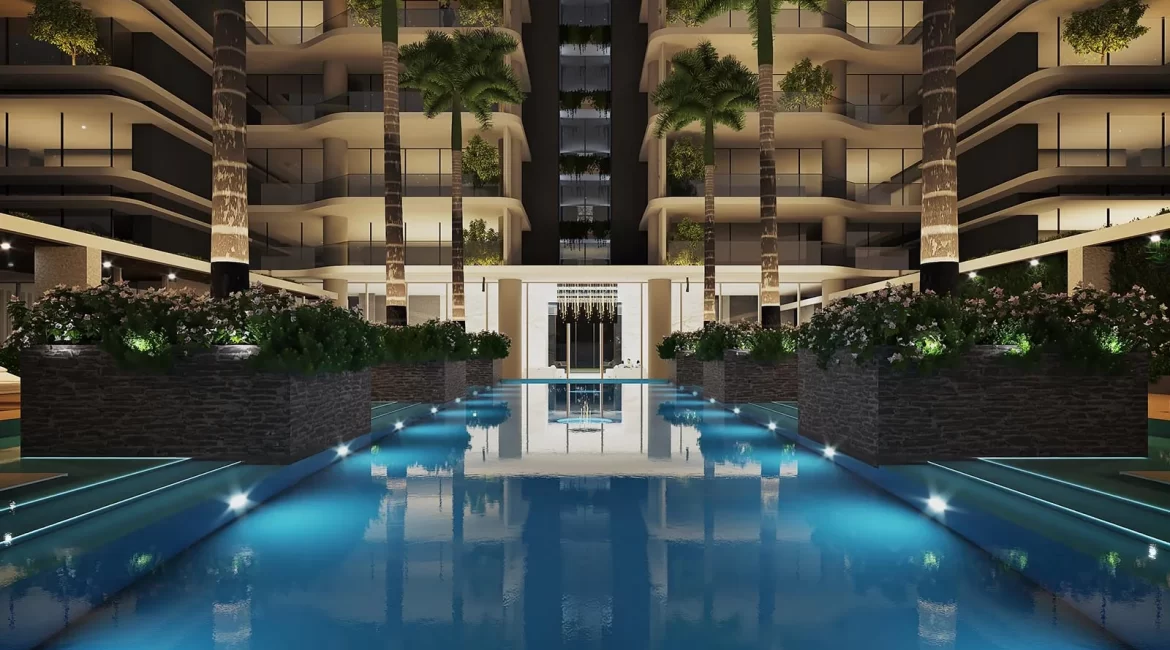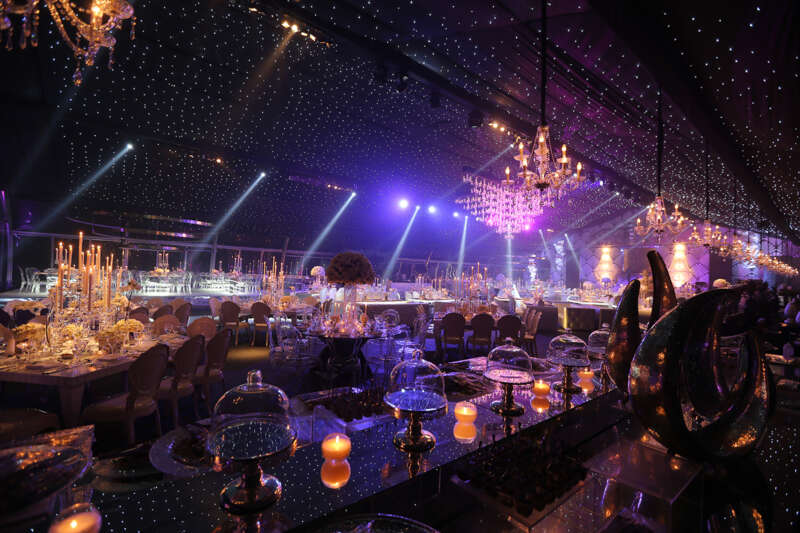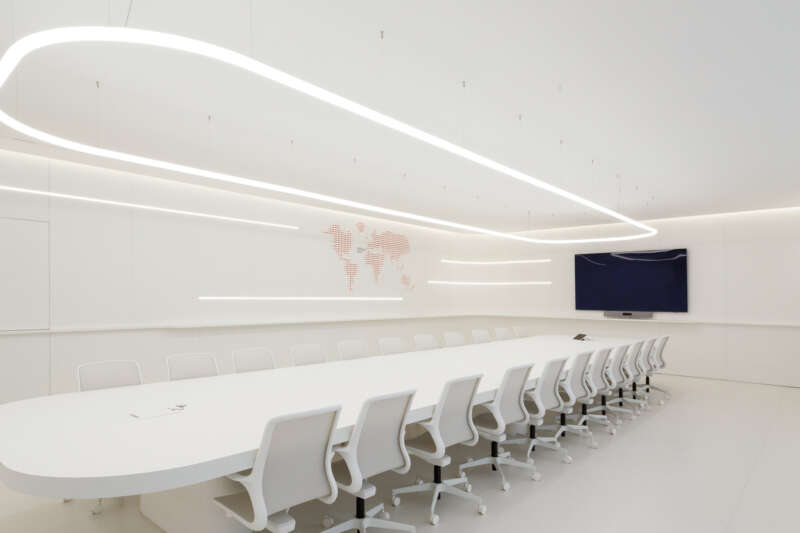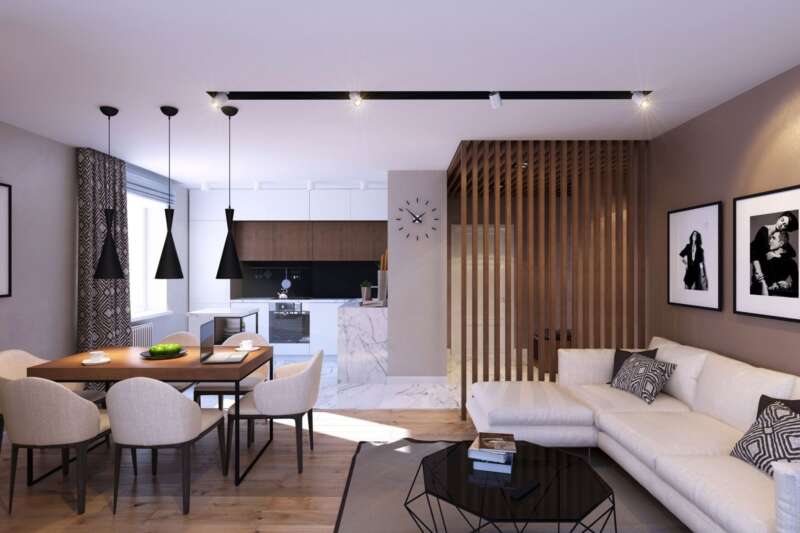Understanding Façade Lighting
Understanding façade lighting, in today’s architectural landscape, is not simply a functional necessity but a creative endeavor that breathes life into structures after dusk. By exploring different types of facade lighting, ranging from the nuanced elegance of accent lighting to the mesmerizing drama of shadow play.
From commercial spaces that use lighting to project brand narratives, every architectural context benefit from a tailored approach to facade lighting. Residential structures, too, are explored, revealing how lighting creates intimate and secure environments while adding personalized touches that resonate with homeowners.
A. What is Facade Lighting?
It is often called architectural lighting, encompasses the strategic application of illumination to the external surfaces of buildings and structures. It serves as a deliberate and artistic manipulation of light to enhance the visual aesthetics, functionality, and overall ambiance of architectural designs, both during the evening and at night.
At its core, facade lighting transcends mere functional illumination and becomes a powerful tool for architectural storytelling. It involves a meticulous selection of light fixtures, placement, intensity, and color to accentuate the architectural features, textures, and dimensions of a building.
The significance of facade lighting goes beyond the purely ornamental. It has the potential to impact the urban environment, influence the way we perceive and interact with buildings, and even contribute to energy efficiency and sustainability goals. Well-designed facade lighting can breathe life into cityscapes after dark, fostering a sense of safety, community, and artistic expression.
Furthermore, it is vital in preserving buildings’ historical and cultural heritage. It enables the appreciation of architectural details that might otherwise be obscured in darkness, allowing these structures to continue narrating their stories even after sunset. By skillfully intertwining technology, design, and urban planning, facade lighting showcases the harmonious coexistence of modernity and tradition.
This is why it’s expected that facade lighting is accompanied by a range of requisites, notably encompassing sustainability and energy efficiency considerations.
B. Role in Enhancing Building Aesthetics and Visibility
Facade lighting assumes a pivotal role in architecture, as it emerges as a masterful tool that enhances the visual allure of buildings and elevates their prominence and visibility within the urban landscape. It serves as a dynamic means of transforming the built environment after nightfall, and captivating charm extending beyond daylight.
One of the foremost functions of facade lighting lies in its capacity to accentuate the architectural features and details that might otherwise remain obscured in the shadows. By thoughtfully employing various lighting techniques, such as accent lighting and grazing, designers can selectively emphasize elements like intricate facades, ornate designs, and unique textures. This meticulous illumination brings forth a depth and three-dimensionality often concealed during the day, inviting viewers to appreciate the building’s intricate craftsmanship and artistic nuances.
Moreover, facade lighting profoundly impacts the overall aesthetics of the built environment. It transforms structures into canvases of light, enabling architects to craft captivating narratives and visual experiences. Through carefully orchestrated interplays of light and shadow, buildings can evoke different moods and emotions, ranging from drama and grandeur to subtlety and elegance. As a result, facade lighting contributes to creating iconic landmarks that define the city skyline and serve as enduring symbols of culture and design.
In urban settings, the role of facade lighting extends beyond aesthetic enhancement. It serves as a means of enhancing the visibility and identity of buildings, especially during the night when ambient lighting might be insufficient. By employing strategic illumination, architects and urban planners can ensure that critical structures and landmarks remain visible and recognizable, contributing to wayfinding, navigation, and a sense of security.
The fusion of aesthetics and visibility achieved through facade lighting holds remarkable potential to reshape how we interact with our surroundings. It instills a sense of enchantment, drawing pedestrians and passersby to engage with the architectural marvels that might otherwise blend into the darkness. This interplay of light and architecture fosters a sense of connection, turning buildings into beacons that guide our gaze and invite us to explore the urban tapestry.
C. Influence on Energy Efficiency and Sustainability
Within modern architecture and urban design, the integration of facade lighting extends beyond its aesthetic and functional dimensions, encompassing a critical consideration for energy efficiency and sustainability. This strategic approach aligns with contemporary environmental consciousness and underscores the responsible use of resources in pursuing architectural innovation.
Facade lighting, when harnessed intelligently, can significantly impact the energy footprint of a building. Choosing lighting fixtures, technology, and placement can reduce energy consumption and minimize wastage. For instance, utilizing energy-efficient LED lighting systems allows for precise light output control, minimizing unnecessary spillage and directing illumination precisely where needed. This, in turn, curtails energy usage and light pollution while maximizing the visual impact.
Sustainability, a cornerstone of modern architectural philosophy, is deeply intertwined with facade lighting. By embracing sustainable lighting practices, architects and designers can harmonize their creative visions with environmental responsibility. Incorporating sustainable energy resources, such as solar panels or kinetic energy harvesting, has the potential to energize facade lighting systems, thereby lessening reliance on traditional energy networks and mitigating carbon emissions. Moreover, adaptive lighting systems that respond to natural light conditions and user presence further enhance the energy efficiency of facade lighting.
By thoughtfully addressing lighting design on a citywide scale, urban planners can orchestrate a synergy between architectural aesthetics and responsible energy management. Carefully selecting lighting levels, fixtures, and timing can significantly reduce overall energy consumption, contributing to more sustainable urban environments.
Furthermore, sustainable facade lighting can actively engage the community in embracing energy-conscious lifestyles. By making the energy-saving aspects of facade lighting visible and palpable, residents and visitors become more aware of the collective impact of their actions on the environment. This heightened awareness can extend beyond the cityscape, fostering a broader culture of environmental stewardship.
Check our project for façade lighting for Bourdillon 39, Ikoyi, Nigeria: https://trend-yard.com/portfolio/bourdillon-39-tower/







